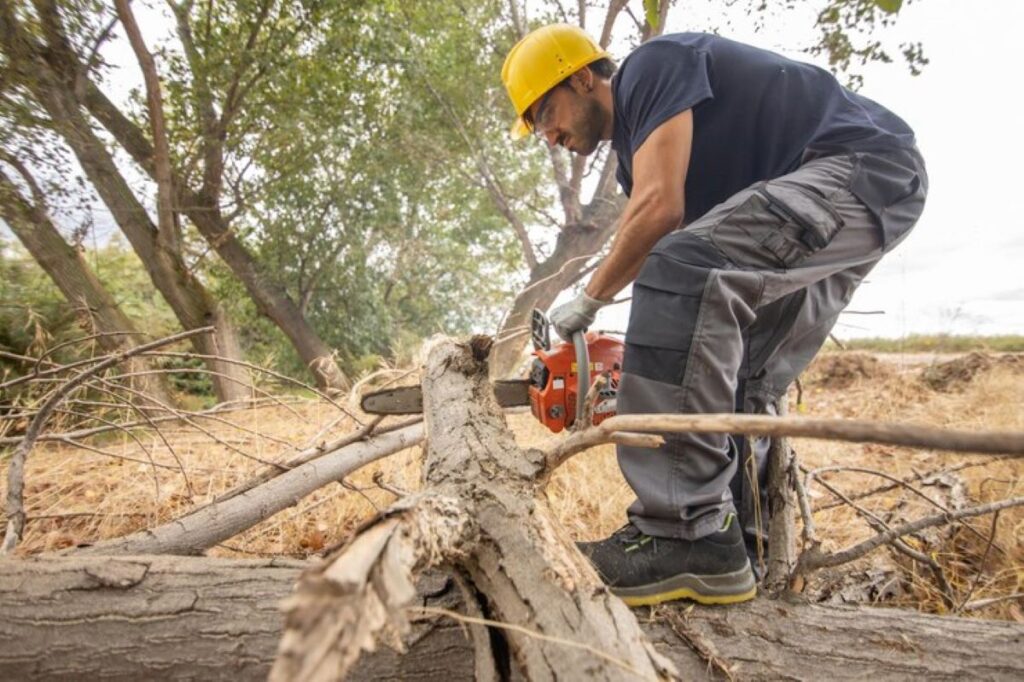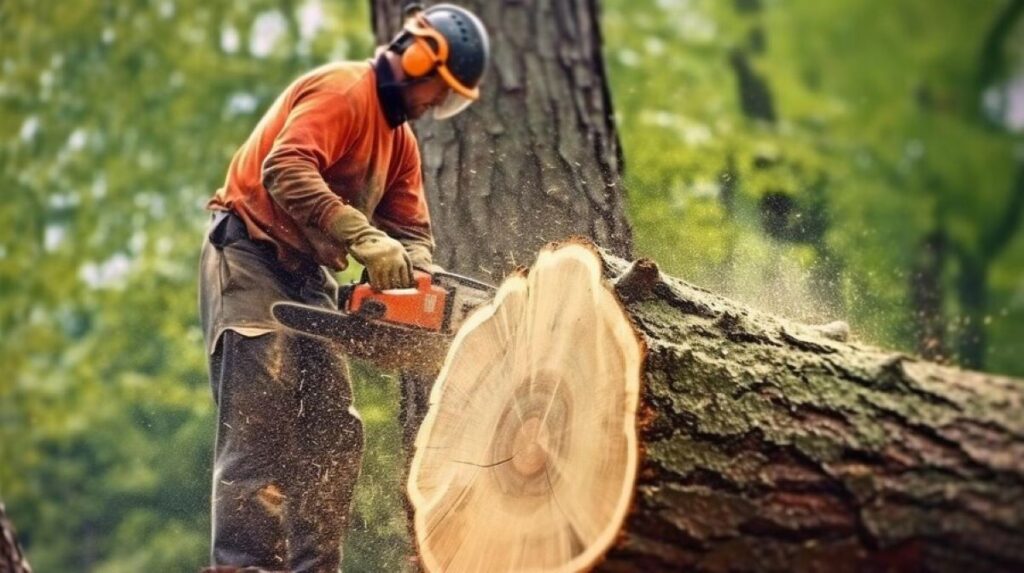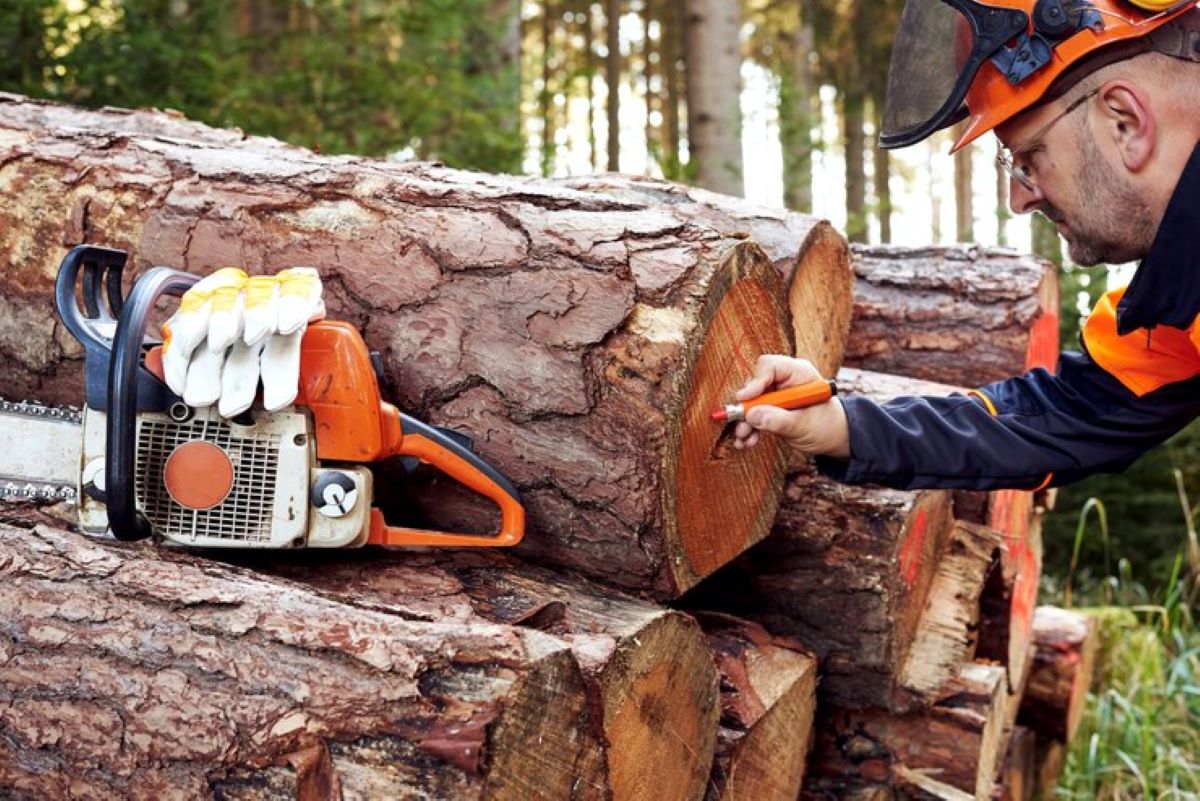Trees are a beautiful and essential part of our natural environment. They provide shade, clean air, and contribute to the overall aesthetics of a property. However, there are instances when tree and stump removal becomes necessary. Whether it’s due to safety concerns, property value, or personal preference, understanding the process and considerations involved is crucial for every property owner. In this article, we will explore the various aspects of tree and stump removal, including the need for it, the processes involved, hiring professionals, and DIY options.
Understanding the Need for Tree and Stump Removal
The Impact of Unwanted Trees and Stumps on Property Value
Unwanted tree stump removal can have a significant impact on the value of your property. Besides being unsightly, overgrown or diseased trees can lower the curb appeal and turn potential buyers away. Moreover, stumps left behind after tree removal can pose a tripping hazard and interfere with landscaping plans. By removing unwanted trees and stumps, you can create a clean and inviting environment, thereby increasing your property’s value.
Additionally, overgrown trees can also cause structural damage to buildings and underground utilities. Their roots may infiltrate plumbing systems, causing blockages and costly repairs. In extreme cases, large trees close to buildings can pose a risk during storms, potentially leading to property damage and endangering occupants. Removing such trees not only enhances the aesthetics of your property but also ensures the safety and longevity of your structures.
Environmental Considerations for Tree and Stump Removal
While tree and stump removal may seem straightforward, it is essential to consider the environmental impact of these actions. Trees provide valuable habitat for wildlife, contribute to soil stability, and help regulate temperature. Before deciding to remove a tree, it’s crucial to assess its overall health and explore alternatives such as pruning or trimming. If removal is necessary, ensure that you replant trees or contribute to local reforestation efforts to mitigate the environmental impact.
Furthermore, trees play a crucial role in air purification by absorbing carbon dioxide and releasing oxygen. Removing trees without proper consideration can disrupt this balance and contribute to air pollution. It is important to consult with arborists or environmental experts to develop a sustainable tree management plan that considers the ecological benefits of trees while addressing any safety or aesthetic concerns on your property.
The Process of Tree Removal
Safety Measures in Tree Removal
Tree removal can be a hazardous task that should be approached with caution. Before initiating any removal process, it is vital to assess the tree’s stability, location, and potential hazards. Hiring a certified arborist with experience in tree removal is recommended. They will have the necessary skills and equipment to safely remove the tree without causing damage to property or injury to individuals.
Furthermore, it’s crucial to consider the environmental impact of tree removal. Arborists often assess the tree’s ecological value and recommend alternatives such as tree preservation or relocation where possible. By taking these factors into account, the tree removal process can be conducted in a responsible and sustainable manner, minimizing negative effects on the ecosystem.
Tools and Techniques for Effective Tree Removal
Effective tree removal requires the use of specific tools and techniques. These may include chainsaws, rope systems, and cranes for larger trees. The process typically involves cutting the tree into sections, starting from the top and working downwards. It’s important to remove branches and limbs carefully to avoid any damage to property or surrounding vegetation. Additionally, professional arborists are trained to control the tree’s fall direction, ensuring the safety of the removal process.
In addition to the physical tools used, arborists also employ various safety equipment such as helmets, gloves, and safety harnesses to protect themselves during the tree removal process. Prior to beginning work, a thorough inspection of the tree and its surroundings is conducted to identify any potential risks or obstacles. By following strict safety protocols and utilizing the appropriate tools, arborists can efficiently and safely remove trees of all sizes and conditions. You can get about tree removal costs in Northern Beaches Sydney by visiting the link : https://solidrockrealestate.net/understanding-tree-removal-costs-in-northern-beaches-sydney/
The Process of Stump Removal
Different Methods of Stump Removal
Once a tree is removed, the unsightly stump remains. There are several methods for stump removal, each with its pros and cons. One common approach is stump grinding, where a specialized machine grinds the stump into small wood chips. This method is efficient and leaves the area ready for replanting or landscaping. Stump grinding also helps prevent regrowth of the tree. Another option is using chemicals to accelerate the decomposition process, but this can be a lengthy process and may involve environmental considerations. Alternatively, manual extraction or using heavy machinery can be employed, depending on the size and location of the stump. Manual extraction is labor-intensive but may be necessary for stumps in challenging locations.
When considering the method of stump removal, it is important to assess factors such as cost, time, environmental impact, and future land use. Consulting with a professional arborist can help determine the most suitable approach for your specific situation.
Post-Removal Cleanup and Maintenance
After the stump is removed, it is essential to clean up the area thoroughly. This includes removing any wood chips, debris, or roots that may be left behind. It is advisable to inspect the surrounding area for potential damage caused during the removal process, such as underground utility lines. Additionally, proper disposal of the wood chips or repurposing them for mulch can be considered to minimize waste and contribute to sustainable landscaping practices. Replanting grass or other vegetation in the area can help restore the landscape and prevent soil erosion.
Regular maintenance of the area is crucial to ensure the long-term health of the land. This may involve monitoring for any signs of regrowth from remaining roots or applying herbicides to prevent new growth. Adding organic matter to the soil can improve its fertility and structure, promoting the growth of new plants. By taking care of the area post-stump removal, you can create a healthy and vibrant environment for future landscaping projects.

Hiring Professionals for Tree and Stump Removal
When it comes to the intricate task of tree and stump removal, enlisting the expertise of professionals is often the wisest choice. These specialists bring a wealth of knowledge and experience to the job, ensuring that the process is not only efficient but also carried out with the utmost care and safety measures in place. By entrusting your tree and stump removal needs to skilled professionals, you can rest assured that the job will be done effectively and without causing any harm to your property or the surrounding environment.
Moreover, when selecting a service provider for tree and stump removal, it is crucial to delve into various factors beyond just their technical capabilities. Consider aspects such as their reputation within the community, the number of years they have been in the industry, their insurance coverage to protect against any unforeseen incidents, and their certification to perform such specialized tasks. By conducting thorough research and due diligence, you can ensure that you are engaging a reputable and reliable professional for your tree and stump removal needs.
Factors to Consider When Hiring Professionals
When it comes to tree and stump removal, hiring professionals is often the safest and most efficient option. Before selecting a service provider, consider factors such as their reputation, experience, insurance coverage, and certification. Reading online reviews and obtaining multiple quotes will give you a better understanding of the service quality and cost. Remember to ask about their approach to environmental sustainability and inquire if they offer post-removal cleanup services.
The Cost of Professional Tree and Stump Removal
The cost of professional tree and stump removal can vary depending on various factors. These include the size and type of trees, accessibility, location, and additional services required, such as stump grinding or post-removal cleanup. It is essential to obtain detailed quotes from different professionals and clarify any additional charges, such as disposal fees or permits. While cost is a crucial consideration, prioritize quality and reliability when making your final decision.
DIY Tree and Stump Removal
Necessary Equipment for DIY Removal
For those with the necessary skills and experience, DIY tree and stump removal can be an option. However, it’s crucial to have the right equipment to ensure your safety and the successful completion of the task. Some essential tools include chainsaws, safety gear such as helmets and gloves, and ropes for controlled tree felling. Stump removal may require additional equipment such as stump grinders or digging tools, depending on the chosen method.

Safety Precautions for DIY Tree and Stump Removal
DIY tree and stump removal can be physically demanding and potentially dangerous. It is crucial to prioritize safety throughout the process. Before starting any work, assess the tree’s stability, surrounding obstacles, and power lines that may interfere during the removal process. Ensure you have the necessary safety gear and follow proper cutting techniques to minimize the risk of injury. If uncertain or dealing with large or complex trees, consider consulting a professional to avoid potential hazards.
When it comes to tree removal, it’s important to consider the environmental impact as well. Trees play a vital role in our ecosystem, providing shade, improving air quality, and supporting wildlife. Before deciding to remove a tree, evaluate its health and consider alternative solutions, such as pruning or trimming, to maintain its integrity while addressing any concerns.
Additionally, it’s worth noting that tree removal may require permits or permissions from local authorities. Some areas have regulations in place to protect certain tree species or preserve the natural landscape. It’s essential to research and comply with any legal requirements before proceeding with DIY tree removal.
In conclusion, tree and stump removal is a complex process that should be approached carefully. The need for removal can vary from improving property value to addressing safety concerns. Understanding the processes involved, hiring professionals when needed, and considering DIY options with caution are all key factors in achieving comprehensive solutions for your property. By taking these steps, you can enhance your property’s beauty, safety, and environmental sustainability while enjoying the benefits of a well-maintained outdoor space.
